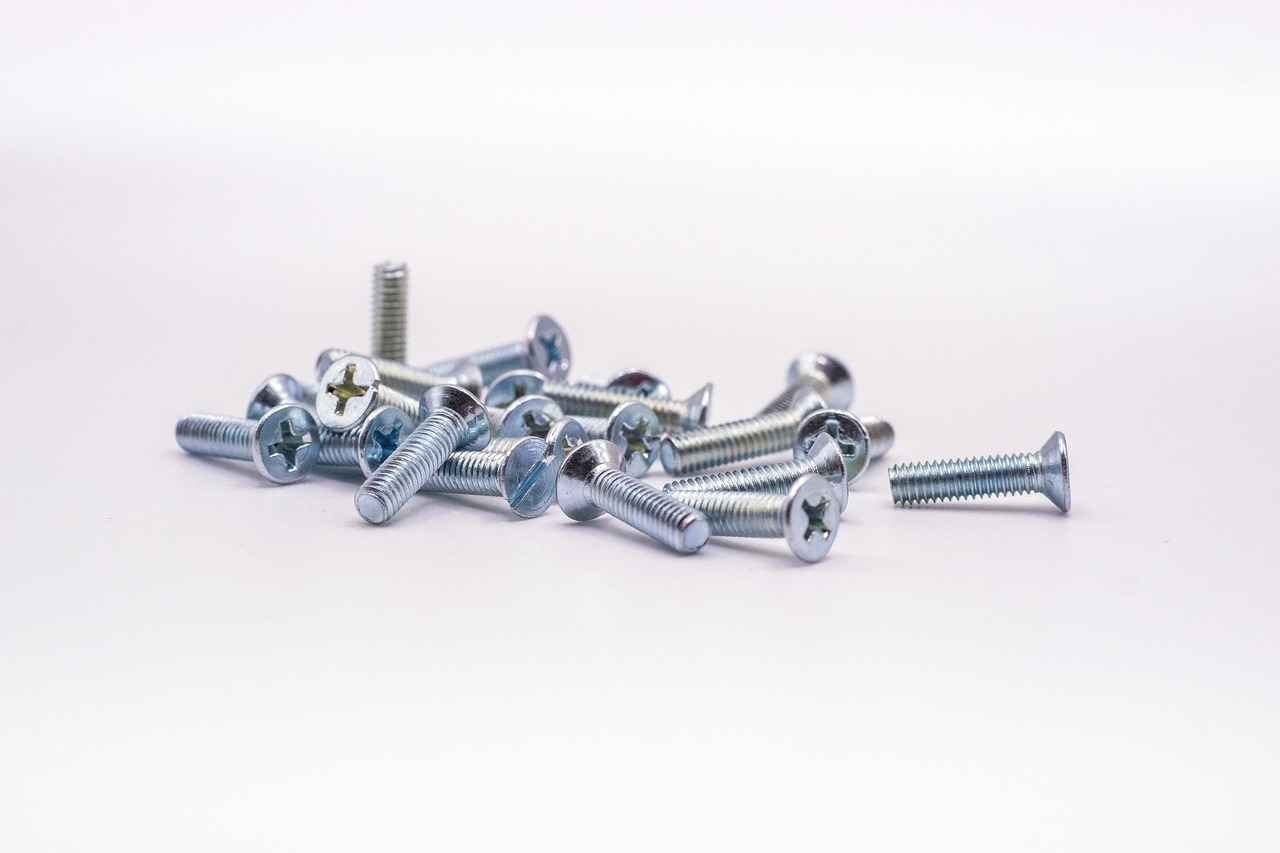The Tire Pressure Monitoring System, commonly referred to as TPMS, is an essential feature in Honda Accord vehicles. This system plays a critical role in maintaining vehicle safety and efficiency by continuously monitoring tire pressure. In this article, we will delve into the functionality, significance, and operational aspects of TPMS, ensuring that Honda Accord owners understand its importance.
TPMS, or Tire Pressure Monitoring System, is a safety mechanism designed to alert drivers when tire pressure falls below recommended levels. This feature not only enhances safety by preventing blowouts but also contributes to improved fuel efficiency. Maintaining proper tire pressure is crucial for optimal vehicle performance.
Understanding the significance of TPMS can greatly benefit Honda Accord owners. Proper tire pressure is linked to better fuel economy, enhanced safety, and prolonged tire lifespan. When tires are inflated to the correct pressure, they wear evenly and perform efficiently, reducing the likelihood of accidents caused by tire failure.
TPMS operates through sensors installed in each tire. These sensors continuously monitor air pressure and relay real-time data to the vehicle’s onboard computer. If the system detects that tire pressure is below safe levels, it triggers a warning light on the dashboard, prompting the driver to take action.
There are two main types of TPMS: direct and indirect. Direct TPMS utilizes pressure sensors to provide precise readings of tire inflation. In contrast, indirect TPMS estimates tire pressure based on wheel speed sensors, which analyze vehicle performance to infer pressure levels. While both systems serve the same purpose, direct TPMS is generally more accurate and responsive.
One of the key advantages of direct TPMS is its ability to detect slow leaks, offering timely alerts to drivers. This proactive approach allows for immediate action, ensuring that tires remain in optimal condition. Additionally, direct TPMS provides real-time data, enhancing overall vehicle safety.
To monitor the status of your TPMS, pay attention to the dashboard warning light. A steady light typically indicates that at least one tire is under-inflated, while a blinking light suggests a malfunction within the system. Regularly checking these indicators can help maintain tire health.
- Steady TPMS Light: This indicates that one or more tires are under-inflated. Immediate inspection and inflation are recommended.
- Blinking TPMS Light: A blinking light suggests a malfunction in the TPMS, which may require diagnostic checks to ensure all sensors are functioning correctly.
After adjusting tire pressure or replacing tires, resetting the TPMS is essential. The process may vary depending on the model year and trim of your Honda Accord. Generally, it involves turning on the ignition, pressing the TPMS reset button, and driving the vehicle for a short distance to recalibrate the system.
Resetting the TPMS is necessary after inflating tires, changing tires, or when the TPMS light remains illuminated despite proper tire pressure. This ensures accurate monitoring and helps prevent potential issues.
Regular maintenance of your TPMS is crucial for its longevity and effectiveness. This includes:
- Monthly Tire Pressure Checks: Regularly checking tire pressure ensures optimal inflation, which improves safety and fuel efficiency.
- Sensor Functionality: Ensure that the TPMS sensors are functioning correctly. If the warning light remains illuminated, it may indicate a sensor issue.
- Battery Replacement: Some TPMS sensors are equipped with batteries that may need replacement after several years of use.
By understanding and maintaining the TPMS in your Honda Accord, you can enhance safety, improve fuel efficiency, and extend the life of your tires.

What is TPMS?
The Tire Pressure Monitoring System, commonly referred to as TPMS, is an essential feature in modern vehicles, including the Honda Accord. This system is designed to enhance safety and efficiency by monitoring tire pressure in real-time. When tire pressure falls below the recommended levels, TPMS alerts the driver, helping to prevent potential accidents and improve fuel efficiency.
TPMS stands for Tire Pressure Monitoring System, a critical safety feature that alerts drivers when tire pressure is too low. Maintaining proper tire pressure is not just about comfort; it directly impacts vehicle performance and safety. Under-inflated tires can lead to poor handling, increased tire wear, and even blowouts, which can result in serious accidents. By providing timely alerts, TPMS helps drivers take action before problems escalate.
TPMS utilizes sensors located within each tire to monitor air pressure. These sensors continuously send data to the vehicle’s onboard computer system. If the pressure in any tire drops below the safe threshold, the system triggers a warning light on the dashboard, alerting the driver to inspect and inflate the affected tire. This proactive approach is vital for maintaining optimal driving conditions.
Understanding the importance of TPMS can significantly enhance your driving experience. Here are some key reasons:
- Enhanced Safety: Keeping tires at the correct pressure reduces the risk of blowouts and improves vehicle handling.
- Improved Fuel Efficiency: Properly inflated tires contribute to better fuel economy, as under-inflated tires can increase rolling resistance.
- Extended Tire Life: Regular monitoring helps prevent uneven tire wear, ensuring that your tires last longer.
There are two primary types of TPMS: direct and indirect. Direct TPMS uses pressure sensors in each tire to provide accurate readings of tire pressure. In contrast, indirect TPMS relies on wheel speed sensors to estimate tire pressure based on the performance of the tires. While both systems serve the same purpose, direct TPMS tends to offer more reliable and precise information.
Understanding the different TPMS warning lights on your dashboard is crucial:
- Steady TPMS Light: Indicates that at least one tire is under-inflated. Immediate action is required to inspect and inflate the tire.
- Flashing TPMS Light: Suggests a malfunction within the TPMS, which may require a diagnostic check to ensure all sensors are functioning correctly.
Regular maintenance of your TPMS is essential for its longevity and effectiveness. Here are some practical tips:
- Monthly Tire Pressure Checks: Conducting monthly checks helps maintain optimal inflation, improving safety and extending tire lifespan.
- Sensor Functionality: Ensure that the TPMS sensors are working correctly. If the warning light remains illuminated despite proper tire pressure, have the system inspected.
- Battery Replacement: TPMS sensors are equipped with batteries that may need replacement after several years. Regular checks can prevent unexpected failures.
In summary, the Tire Pressure Monitoring System is a vital component of vehicle safety and efficiency. By understanding its functionality and importance, Honda Accord owners can ensure a safer driving experience while optimizing fuel economy and extending tire life.

Why is TPMS Important for Your Honda Accord?
The Tire Pressure Monitoring System (TPMS) is an essential feature in modern vehicles, including the Honda Accord. Understanding its significance can greatly enhance your driving experience. This article delves into why TPMS is crucial for your Honda Accord, emphasizing its role in maintaining optimal tire pressure and the benefits that come with it.
Maintaining proper tire pressure is vital for several reasons. A well-functioning TPMS not only ensures your tires are inflated to the correct levels but also contributes to overall vehicle performance. Here are some key points to consider:
- Improved Fuel Efficiency: Correct tire pressure can significantly affect fuel consumption. Under-inflated tires create more rolling resistance, which forces the engine to work harder and consume more fuel. By utilizing the TPMS, you can ensure that your tires are always at optimal pressure, leading to better fuel economy.
- Enhanced Safety: Driving on improperly inflated tires increases the risk of tire blowouts and accidents. TPMS alerts you when tire pressure is low, allowing you to address the issue before it leads to dangerous situations. This feature is particularly important for long-distance travel or in adverse weather conditions.
- Prolonged Tire Life: Maintaining the correct tire pressure helps prevent uneven wear and tear, extending the lifespan of your tires. TPMS helps you monitor your tire health, which can save you money on premature tire replacements.
- Environmental Impact: Properly inflated tires contribute to lower carbon emissions. By ensuring optimal tire pressure, you not only improve your vehicle’s efficiency but also do your part in reducing your environmental footprint.
In summary, the TPMS in your Honda Accord is more than just a warning system; it is a vital tool for ensuring safe driving, enhancing fuel economy, and prolonging tire life. Regularly checking and responding to TPMS alerts can lead to a more efficient and safer driving experience.
By understanding the importance of TPMS, you can take proactive steps to maintain your vehicle’s performance. Regular tire pressure checks and prompt responses to TPMS warnings will ensure that your Honda Accord operates at its best.
How Does TPMS Work?
The Tire Pressure Monitoring System, commonly known as TPMS, is an essential feature in modern vehicles, including the Honda Accord. Understanding how this system works is crucial for every driver, as it plays a significant role in ensuring safety and efficiency on the road.
TPMS utilizes advanced sensors installed within each tire to continuously monitor the air pressure. These sensors are designed to detect any significant changes in pressure that may occur while driving or when the vehicle is stationary. When the system identifies that the tire pressure has dropped below a predetermined threshold, it promptly sends a signal to the vehicle’s onboard computer.
Once the onboard computer receives the data from the sensors, it processes the information and alerts the driver through a visual warning on the dashboard. This alert serves as a crucial reminder to check the affected tire(s) and inflate them to the recommended pressure levels. The real-time aspect of TPMS is vital, as it allows drivers to address potential issues before they escalate into more serious problems, such as tire blowouts.
Maintaining the correct tire pressure is not just about the longevity of your tires; it also significantly impacts vehicle safety and fuel efficiency. Under-inflated tires can lead to increased rolling resistance, which forces the engine to work harder and consume more fuel. Furthermore, improper tire pressure can affect handling and braking, increasing the risk of accidents.
There are two primary types of TPMS: direct and indirect. Direct TPMS uses pressure sensors to measure the actual air pressure in each tire, providing precise readings. On the other hand, indirect TPMS estimates tire pressure based on wheel speed sensors and does not provide real-time pressure data. Understanding the differences can help drivers appreciate the advantages of direct TPMS, which offers more accurate and timely alerts.
- Accurate Readings: Direct TPMS delivers precise pressure readings, ensuring that drivers are always informed about their tire conditions.
- Early Leak Detection: This system can identify slow leaks, allowing for prompt repairs before they lead to tire failure.
- Enhanced Safety: With accurate monitoring, drivers can maintain optimal tire pressure, improving overall vehicle safety.
To check the status of your TPMS, simply look at the dashboard warning light. A steady light indicates that at least one tire is under-inflated, while a blinking light suggests a malfunction within the TPMS itself. Regularly monitoring these indicators can help you address tire issues promptly.
After adjusting tire pressure or replacing tires, it’s essential to reset the TPMS. Here are the general steps:
- Turn the ignition to the “On” position without starting the engine.
- Locate and press the TPMS reset button until the TPMS light blinks three times.
- Drive the vehicle for a short distance to allow the system to recalibrate.
Maintaining your TPMS involves regular tire pressure checks and ensuring that the sensors are functioning correctly. Monthly inspections can help prevent unexpected issues and ensure that your TPMS remains effective. Additionally, consider replacing TPMS sensors if the warning light remains illuminated despite proper tire inflation.
Direct vs. Indirect TPMS
The Tire Pressure Monitoring System (TPMS) is an essential feature in modern vehicles, including the Honda Accord. Understanding the different types of TPMS can enhance your knowledge of how your vehicle operates and the importance of maintaining optimal tire pressure.
When it comes to TPMS, there are two primary types: direct TPMS and indirect TPMS. Each system has its own unique method of monitoring tire pressure, and understanding these differences can help you make informed decisions regarding tire maintenance.
Direct TPMS utilizes pressure sensors located within each tire. These sensors measure the actual air pressure in real-time and transmit this data to the vehicle’s onboard computer. This system provides accurate readings and can quickly identify any issues, such as slow leaks or significant drops in tire pressure. When the pressure falls below a predetermined threshold, the driver receives an alert, allowing for prompt action to be taken.
On the other hand, indirect TPMS does not rely on pressure sensors. Instead, it uses the vehicle’s wheel speed sensors to estimate tire pressure based on the performance of each tire. By monitoring the rotational speed of the wheels, the system can infer if a tire is under-inflated. For instance, a tire that is low on air will rotate at a different speed compared to well-inflated tires. While this system is generally less expensive to implement, it may not provide the same level of accuracy as direct TPMS.
- Advantages of Direct TPMS:
- Provides real-time pressure readings.
- Can detect slow leaks effectively.
- Offers more precise data for better tire maintenance.
- Advantages of Indirect TPMS:
- Lower cost of implementation.
- Less complex system with fewer parts to maintain.
- Can still alert drivers to significant pressure issues.
Both systems play a crucial role in vehicle safety and efficiency. A well-functioning TPMS can help prevent accidents caused by tire blowouts and improve fuel efficiency by ensuring that tires are properly inflated. Regular maintenance and timely checks of your TPMS system are essential to ensure its effectiveness.
In summary, understanding the differences between direct and indirect TPMS can enhance your ability to maintain your Honda Accord’s tire health. Whether you have a direct or indirect system, staying informed about your tire pressure can lead to safer driving experiences and improved vehicle performance.
Benefits of Direct TPMS
The are numerous and significant, especially for drivers who prioritize safety and vehicle performance. Unlike its indirect counterpart, direct Tire Pressure Monitoring System (TPMS) offers a range of advantages that can enhance your driving experience and ensure optimal tire health.
Direct TPMS utilizes pressure sensors located within each tire to provide real-time data on tire pressure. This system sends information directly to the vehicle’s onboard computer, allowing for immediate detection of any pressure irregularities. The precision of direct TPMS makes it a preferred choice for many modern vehicles, including the Honda Accord.
One of the most notable benefits of direct TPMS is its ability to deliver more accurate readings compared to indirect systems. The sensors continuously monitor tire pressure, ensuring that you receive precise information about your tires’ conditions. This level of accuracy is crucial for maintaining proper tire inflation, which directly impacts vehicle safety and performance.
Another significant advantage is the capability of direct TPMS to detect slow leaks. Unlike indirect systems, which may only alert drivers when tire pressure drops significantly, direct TPMS can identify gradual pressure loss. This early detection allows drivers to take timely action, preventing potential blowouts and enhancing overall safety on the road.
Maintaining optimal tire pressure is essential for improving fuel efficiency. Under-inflated tires can lead to increased rolling resistance, causing your vehicle to consume more fuel. Direct TPMS helps ensure that your tires are always inflated to the recommended levels, which can lead to better gas mileage and lower fuel costs.
With direct TPMS, drivers receive immediate alerts through dashboard indicators whenever tire pressure falls below safe levels. This user-friendly feature eliminates the need for manual checks and allows drivers to stay informed about their tire health effortlessly. The convenience of real-time monitoring means you can focus on driving rather than worrying about tire maintenance.
Many regions have regulations requiring vehicles to be equipped with TPMS. Direct TPMS not only meets these legal requirements but also exceeds safety standards. By providing accurate data and timely alerts, it contributes significantly to overall road safety, reducing the risk of accidents caused by tire failure.
Investing in a vehicle with direct TPMS can lead to long-term cost savings. By maintaining proper tire pressure, you can extend the lifespan of your tires, reducing the frequency of replacements. Additionally, the improved fuel efficiency and enhanced safety features can lead to lower overall vehicle maintenance costs.
In summary, the benefits of direct TPMS are clear. From enhanced accuracy and early leak detection to improved fuel efficiency and convenience, this system plays a crucial role in maintaining tire health and ensuring driver safety. For Honda Accord owners and drivers of other vehicles, understanding and leveraging the advantages of direct TPMS can lead to a more enjoyable and secure driving experience.
How to Check TPMS Status?
When it comes to maintaining your Honda Accord, understanding the Tire Pressure Monitoring System (TPMS) is crucial. This system not only enhances your vehicle’s safety but also contributes to overall efficiency. One of the most straightforward ways to monitor the TPMS status is by observing the dashboard warning light.
To check the TPMS status on your Honda Accord, you should first familiarize yourself with the dashboard warning light. This light is designed to alert you when there are issues concerning tire pressure. Typically, it will illuminate for two primary reasons:
- Low Tire Pressure: If the TPMS light remains steady, it indicates that at least one of your tires is under-inflated. This situation requires your immediate attention to prevent potential tire damage and ensure safe driving conditions.
- System Malfunction: A blinking TPMS light suggests that there is a malfunction within the TPMS itself. This could mean that the sensors are not functioning correctly, and a diagnostic check may be necessary to identify the issue.
Understanding these signals is essential for maintaining optimal tire pressure and ensuring your vehicle operates efficiently. Ignoring these warnings can lead to decreased fuel efficiency and increased wear on your tires.
If you notice the TPMS light illuminated on your dashboard, here are the steps you should take:
- Check Tire Pressure: Use a reliable tire pressure gauge to check the pressure in all four tires, including the spare if applicable. Ensure that they are inflated to the manufacturer’s recommended levels.
- Inspect for Damage: Look for any visible signs of damage, such as punctures or sidewall bulges, which could indicate a more severe issue.
- Reset the TPMS: If you have adjusted the tire pressure, you may need to reset the TPMS. This process typically involves turning on the ignition and pressing the TPMS reset button, followed by driving for a short distance.
Regularly checking the TPMS status is vital for several reasons:
- Enhanced Safety: Proper tire pressure helps ensure better traction, handling, and braking performance.
- Improved Fuel Economy: Maintaining optimal tire pressure can lead to better fuel efficiency, saving you money in the long run.
- Extended Tire Life: Properly inflated tires wear evenly, which can prolong their lifespan and reduce the frequency of replacements.
By incorporating regular checks into your vehicle maintenance routine, you can significantly improve your driving experience and ensure the longevity of your tires.
Monitoring the TPMS status on your Honda Accord is a simple yet effective way to maintain vehicle safety and efficiency. By being proactive and responsive to the dashboard warnings, you can avoid potential complications and enjoy a smoother, safer ride.

Common TPMS Warning Lights Explained
Understanding the different TPMS warning lights on your dashboard is crucial for maintaining your vehicle’s safety and performance. These lights serve as indicators that alert you to potential issues with your tire pressure or the TPMS itself. By familiarizing yourself with these signals, you can take timely action to address any problems, ensuring that your Honda Accord remains in optimal driving condition.
TPMS warning lights can be categorized into several types, each indicating specific conditions regarding tire pressure or system functionality. Here are the most common lights you may encounter:
- Steady TPMS Light: This light indicates that one or more tires are under-inflated. It is essential to check the tire pressures immediately and inflate them to the recommended levels.
- Blinking TPMS Light: A blinking light suggests a malfunction in the TPMS system. This could be due to faulty sensors or issues with the system’s electrical components, necessitating a diagnostic check.
- TPMS Warning Light with Exclamation Mark: This light typically signifies a more severe issue, such as a tire that has been significantly deflated or a system failure. Immediate inspection is required.
A steady TPMS light is a clear indication that at least one tire is not properly inflated. Ignoring this warning can lead to decreased fuel efficiency, increased tire wear, and a higher risk of blowouts. It’s advisable to check all tires, including the spare, as pressure can fluctuate due to temperature changes or leaks.
When the TPMS light blinks, it usually points to a malfunction within the monitoring system. This could be due to a dead battery in one of the tire sensors or a communication error between the sensors and the vehicle’s onboard computer. If this light remains illuminated after checking the tire pressures, it is crucial to consult a professional technician for a thorough diagnostic assessment.
When you encounter any TPMS warning light, taking the following steps can help:
- Check Tire Pressure: Use a reliable tire pressure gauge to check the inflation of all tires.
- Inspect for Damage: Look for visible signs of damage or punctures in the tires.
- Consult a Professional: If the warning lights persist after addressing tire pressures, seek professional assistance to diagnose potential system failures.
Regular maintenance of your TPMS is essential for safe driving. It is recommended to check your tire pressures at least once a month, as well as before long trips. Additionally, having your TPMS sensors inspected during routine vehicle maintenance can help prevent unexpected issues.
Ignoring TPMS warnings can have serious consequences. Driving on under-inflated tires can lead to increased fuel consumption, reduced handling ability, and a higher likelihood of tire failure. Furthermore, a malfunctioning TPMS can prevent you from receiving important safety alerts, putting you and your passengers at risk.
In conclusion, understanding and responding to TPMS warning lights is vital for maintaining the safety and efficiency of your Honda Accord. By regularly checking tire pressures and addressing any warning signals promptly, you can ensure a smoother and safer driving experience.
What Does a Steady TPMS Light Mean?
The Tire Pressure Monitoring System (TPMS) is an essential feature in modern vehicles, including the Honda Accord. Understanding the various signals it provides can help ensure your safety and the longevity of your tires. One of the most critical indicators is the steady TPMS light.
A steady TPMS light is a clear indication that at least one of your tires is under-inflated. This situation warrants immediate attention, as driving on low tire pressure can lead to several complications, including decreased fuel efficiency, poor handling, and even tire blowouts. When this light illuminates on your dashboard, it is essential to inspect your tires as soon as possible.
Ignoring a steady TPMS light can have serious consequences. Low tire pressure can cause:
- Poor Fuel Economy: Under-inflated tires create more rolling resistance, causing your engine to work harder and consume more fuel.
- Increased Tire Wear: Tires that are not properly inflated wear unevenly, leading to premature replacement.
- Safety Risks: Low pressure can affect your vehicle’s handling and increase the risk of accidents.
When the steady TPMS light appears, follow these steps:
- Check Tire Pressure: Use a tire pressure gauge to check the pressure of each tire, including the spare.
- Inflate Tires: Inflate any under-inflated tires to the manufacturer’s recommended pressure, which can usually be found on a sticker inside the driver’s door.
- Inspect for Damage: Look for any visible signs of damage, such as punctures or sidewall bulges, which may require professional attention.
- Reset the TPMS: After inflating the tires, reset the TPMS according to your vehicle’s manual to ensure accurate monitoring.
Many drivers may misunderstand the implications of the TPMS light. Here are a few common misconceptions:
- Only One Tire Needs Attention: A steady light could indicate multiple tires are under-inflated, not just one.
- It’s Just a Reminder: Some might think of it as a minor notification, but it is a critical safety alert.
- TPMS Will Prevent Tire Issues: While TPMS alerts you to low pressure, it cannot prevent tire damage or wear.
If the TPMS light remains illuminated after inflating your tires, or if you notice any unusual behavior while driving, it’s crucial to consult a professional. There may be an underlying issue with the TPMS sensors themselves, or other tire-related problems that need addressing.
In summary, a steady TPMS light is a vital warning that should not be ignored. Regular maintenance and prompt action can help ensure your Honda Accord remains safe and efficient on the road. Always prioritize tire health for a smoother and safer driving experience.
What Does a Blinking TPMS Light Indicate?
The Tire Pressure Monitoring System (TPMS) is an essential feature in modern vehicles, including the Honda Accord. It helps ensure that your tires are properly inflated, which is crucial for safety and efficiency. Among the various indicators of the TPMS, a blinking light can be particularly concerning. Let’s delve into what a blinking TPMS light signifies and the necessary steps to address it.
A blinking TPMS light is a clear signal that there is a malfunction within the TPMS itself. Unlike a steady TPMS light, which typically indicates that one or more tires are under-inflated, a blinking light suggests that the system is unable to provide accurate tire pressure readings. This could be due to various reasons, including:
- Faulty Sensors: The sensors in the tires may be damaged or malfunctioning, preventing them from accurately measuring tire pressure.
- Low Battery: The battery powering the TPMS sensors may be depleted, leading to a failure in communication with the vehicle’s onboard computer.
- Wiring Issues: Damaged or corroded wiring can disrupt the signal between the sensors and the vehicle system.
If you notice that the TPMS light is blinking, it is important to take action promptly. Here are some recommended steps:
- Check Tire Pressure: Start by manually checking the tire pressure in all four tires to ensure they are inflated to the manufacturer’s recommended levels.
- Inspect the Sensors: Look for any visible signs of damage to the tire sensors. If you have access to a diagnostic tool, you can check for error codes related to the TPMS.
- Visit a Mechanic: If the blinking light persists, it’s advisable to take your vehicle to a certified mechanic or dealership. They can perform a thorough diagnostic check to identify and rectify the issue.
To avoid the inconvenience of a blinking TPMS light, regular maintenance is essential. This includes:
- Monthly Tire Pressure Checks: Regularly checking your tire pressure can help identify potential issues before they escalate.
- Sensor Replacement: TPMS sensors typically have a lifespan of 5-10 years. If your vehicle is older, consider having the sensors inspected or replaced as needed.
- Battery Checks: Ensure that the batteries in the TPMS sensors are functioning correctly to prevent failures.
In summary, a blinking TPMS light should not be ignored. It indicates a malfunction within the system that requires immediate attention. By understanding the implications of this warning light and taking appropriate action, you can ensure the safety and efficiency of your Honda Accord. Regular maintenance and prompt diagnostics are key to keeping your TPMS in optimal working condition.

How to Reset TPMS on Honda Accord?
Resetting the Tire Pressure Monitoring System (TPMS) on your Honda Accord is a crucial step to ensure optimal performance and safety. This process becomes necessary after you adjust the tire pressure or replace the tires. Understanding how to reset TPMS can help you maintain proper tire inflation and enhance your vehicle’s efficiency.
The TPMS is designed to alert you when your tire pressure is below the recommended levels. If you have recently inflated your tires or installed new ones, the system may not automatically recognize these changes. Resetting the TPMS ensures that the system accurately reflects the current tire pressure, preventing any false warnings and ensuring your driving experience is safe.
Resetting the TPMS can vary slightly depending on the model year and trim of your Honda Accord. However, the general process involves a few straightforward steps:
- Turn on the Ignition: Insert the key and turn the ignition to the “On” position without starting the engine.
- Locate the TPMS Reset Button: This button is usually found beneath the steering wheel or near the driver’s side door. Consult your owner’s manual if you have trouble finding it.
- Press the TPMS Reset Button: Hold the button until the TPMS indicator light on the dashboard blinks three times, then release it.
- Drive the Vehicle: After resetting, drive your Honda Accord for about 10-15 minutes at speeds above 50 mph to allow the system to recalibrate.
There are several scenarios when you should consider resetting the TPMS:
- After inflating your tires to the recommended pressure levels.
- When you change your tires, whether due to wear or seasonal changes.
- If the TPMS warning light remains illuminated despite proper tire inflation.
It’s essential to comprehend what the TPMS warning lights indicate. A steady light generally means that one or more tires are under-inflated. In contrast, a blinking light can signify a malfunction in the TPMS itself, which may require a diagnostic check.
To keep your TPMS functioning correctly, regular maintenance is key. Here are some tips:
- Monthly Tire Pressure Checks: Regularly check your tire pressure to ensure it is within the recommended range.
- Sensor Functionality: Ensure that the TPMS sensors are functioning correctly; replace them if necessary.
- Battery Replacement: Some TPMS sensors have batteries that may need replacement after several years.
By following these guidelines, you can effectively manage your TPMS, ensuring your Honda Accord remains safe and efficient on the road. Remember, maintaining proper tire pressure not only enhances safety but also improves fuel efficiency and extends the lifespan of your tires.
Steps to Reset TPMS
The Tire Pressure Monitoring System (TPMS) is a vital component of modern vehicles, including the Honda Accord. It ensures that your tires are properly inflated, which is crucial for safety and efficiency. If you ever need to reset your TPMS, understanding the steps involved can help you maintain optimal tire pressure and enhance your driving experience.
To effectively reset the TPMS in your Honda Accord, follow these step-by-step instructions:
- Turn on the Ignition: Without starting the engine, turn the ignition key to the “ON” position. This action powers the vehicle’s electrical system and prepares it for the reset process.
- Locate the TPMS Reset Button: The TPMS reset button is usually found beneath the steering wheel or on the dashboard. Consult your vehicle’s owner manual if you have trouble locating it.
- Press and Hold the Reset Button: Once you find the button, press and hold it until the TPMS indicator light on the dashboard blinks three times. This indicates that the system is in the process of resetting.
- Release the Button: After the light blinks three times, release the reset button. This action confirms that the reset command has been sent to the TPMS.
- Drive the Vehicle: To complete the reset, drive your Honda Accord for approximately 10 to 15 minutes at a speed of at least 50 mph. This step allows the TPMS to recalibrate and accurately assess the tire pressures.
Following these steps ensures that your TPMS is reset correctly. If the TPMS light remains illuminated after completing the process, it may indicate a malfunction or that tire pressures still need adjustment.
Knowing when to reset the TPMS is as important as knowing how to do it. Here are some common scenarios:
- After Inflating Tires: Whenever you inflate your tires to the recommended pressure, it’s a good practice to reset the TPMS to ensure it reflects the new pressure levels.
- After Tire Replacement: If you replace a tire, whether due to damage or wear, resetting the TPMS is essential for accurate monitoring of the new tires.
- Persistent TPMS Light: If the TPMS warning light stays on even after you have checked and adjusted your tire pressures, a reset may be necessary to clear the warning.
By regularly resetting your TPMS under these conditions, you can help maintain accurate tire pressure readings, which are crucial for safety and fuel efficiency.
In addition to resetting the TPMS, consider the following tips to keep your system functioning effectively:
- Monthly Tire Pressure Checks: Regularly check your tire pressure, ideally once a month, to ensure they are inflated to the manufacturer’s specifications.
- Sensor Maintenance: Ensure that the TPMS sensors are functioning correctly. If you notice any irregularities, such as a flashing light or inaccurate readings, consult a professional.
- Battery Replacement: TPMS sensors are battery-operated and may need battery replacement after several years. Keep an eye on the performance of your sensors to determine when a battery change is necessary.
By following these guidelines, you can ensure that your TPMS remains a reliable safety feature in your Honda Accord, helping you drive with confidence.
When Should You Reset TPMS?
Understanding the right moments to reset your Tire Pressure Monitoring System (TPMS) is essential for maintaining the safety and efficiency of your Honda Accord. The TPMS plays a crucial role in monitoring tire pressures, alerting you when they fall below safe levels. However, there are specific instances when a reset is necessary to ensure accurate readings and optimal performance.
- After Inflating Tires: Once you have inflated your tires to the recommended pressure, it is important to reset the TPMS. This action ensures that the system recognizes the new tire pressure levels, allowing it to provide accurate monitoring moving forward.
- After Changing Tires: Whether you’re switching to winter tires or replacing worn-out tires, resetting the TPMS is crucial. New tires may have different pressure specifications, and the system needs to be updated to reflect these changes.
- When the TPMS Light Remains Illuminated: If the TPMS warning light stays on even after confirming that all tires are properly inflated, a reset is necessary. This situation may indicate that the system is not functioning correctly, and resetting it can help recalibrate the sensors.
It’s important to note that failing to reset the TPMS after these actions can lead to inaccurate tire pressure readings, which could compromise safety and fuel efficiency. Regularly monitoring and maintaining your tire pressure not only enhances vehicle performance but also contributes to longer tire life.
Steps to Reset TPMS
Resetting the TPMS on your Honda Accord is a straightforward process. Here’s how you can do it:
- Turn on the Ignition: Insert the key and turn the ignition to the “On” position without starting the engine.
- Locate the TPMS Reset Button: This button is typically found beneath the steering wheel or in the glove compartment. Refer to your owner’s manual for the exact location.
- Press and Hold the Reset Button: Keep the button pressed until the TPMS warning light blinks three times, then release it.
- Drive the Vehicle: Take your Honda Accord for a short drive (about 10-15 minutes) to allow the system to recalibrate itself.
By following these steps, you can ensure that your TPMS is functioning correctly, providing accurate monitoring of your tire pressure.
Why Regular TPMS Maintenance is Essential
Regular maintenance of your TPMS is vital for safe driving. Monthly tire pressure checks and ensuring that the TPMS sensors are functioning properly can help you avoid issues before they arise. Additionally, if your TPMS light remains illuminated after following the reset procedure, it may indicate a malfunction that requires professional diagnostics.
In summary, resetting your TPMS after inflating tires, changing tires, or when the warning light remains on is crucial for maintaining the accuracy of tire pressure monitoring. By taking these steps, you contribute to safer driving conditions and enhanced vehicle performance.

How to Maintain Your TPMS?
Maintaining your Tire Pressure Monitoring System (TPMS) is essential for ensuring the longevity and functionality of your vehicle’s tires. A well-functioning TPMS not only enhances safety but also improves fuel efficiency and tire lifespan. Below are some crucial practices to keep your TPMS in optimal condition.
It is crucial to conduct monthly tire pressure checks to maintain optimal inflation levels. Tire pressure can fluctuate due to temperature changes, driving conditions, and natural air loss. Following these steps can help:
- Use a reliable tire pressure gauge to measure the pressure.
- Refer to the manufacturer’s specifications for the correct pressure levels.
- Check tire pressure when the tires are cold for the most accurate readings.
By keeping your tires inflated to the recommended levels, you can improve fuel efficiency and enhance overall safety on the road.
Another vital aspect of TPMS maintenance is ensuring that the sensors are functioning correctly. Here are some tips:
- Monitor the dashboard for any warning lights indicating sensor malfunctions.
- Perform regular diagnostics to check for any issues with the TPMS sensors.
- Consider professional inspections if warning lights persist.
Regularly checking the sensors ensures that you receive accurate readings, which is essential for maintaining safe tire pressure.
TPMS sensors are equipped with batteries that can eventually wear out. It is important to replace these batteries as needed to prevent system failures. Here’s how to approach this:
- Check the manufacturer’s guidelines for battery life expectancy.
- Replace batteries during tire rotations or when changing tires.
- Keep an eye on the TPMS warning light; if it remains illuminated, it may indicate a battery issue.
Replacing the batteries proactively can save you from unexpected sensor failures and ensure continuous monitoring of your tire pressure.
Being aware of what different TPMS alerts mean can significantly enhance your maintenance efforts. Here are some common alerts:
- Steady TPMS Light: This indicates that one or more tires are under-inflated. Immediate action is required to check and inflate the tires.
- Blinking TPMS Light: A blinking light typically signifies a malfunction within the TPMS. This requires a diagnostic check to identify the issue.
Understanding these alerts allows you to respond quickly, preventing further issues related to tire pressure.
While regular checks can be done at home, it’s advisable to have your TPMS professionally inspected during routine maintenance. Professionals can:
- Perform comprehensive diagnostics to ensure all components are functioning.
- Identify any potential issues that may not be visible during regular checks.
- Provide expert advice on when to replace tires or sensors.
Investing in professional inspections can save you money in the long run by preventing costly repairs associated with neglected tire maintenance.
By implementing these maintenance practices, you can ensure that your TPMS remains effective, keeping you safe on the road and enhancing your vehicle’s performance.
Regular Tire Pressure Checks
Maintaining the proper tire pressure is crucial for the overall performance and safety of your vehicle. are an essential part of your vehicle maintenance routine, especially for drivers of the Honda Accord. This practice not only enhances your vehicle’s safety but also contributes to fuel efficiency and extends the lifespan of your tires.
One of the primary reasons to conduct monthly tire pressure checks is to ensure that your tires are optimally inflated. Proper inflation helps maintain traction and control, which is vital for safe driving. Under-inflated tires can lead to reduced handling capabilities, increasing the risk of accidents. Additionally, maintaining the correct tire pressure can improve your vehicle’s fuel efficiency, saving you money in the long run.
When your tires are not inflated to the recommended pressure, your vehicle has to work harder to move, which can lead to higher fuel consumption. Studies have shown that under-inflated tires can decrease fuel efficiency by up to 3% for every 1 PSI drop in pressure. Therefore, by checking your tire pressure monthly, you can ensure that you are getting the best possible mileage out of your Honda Accord.
- Gather Your Tools: You will need a reliable tire pressure gauge and access to an air pump.
- Check the Recommended Pressure: Refer to your Honda Accord’s owner manual or the tire placard located on the driver’s side door jamb for the recommended tire pressure.
- Measure the Pressure: Remove the valve cap from the tire and press the gauge onto the valve stem to get a reading.
- Adjust as Necessary: If the pressure is too low, add air until it reaches the recommended level. If it’s too high, release some air.
- Repeat for All Tires: Don’t forget to check the spare tire as well!
It is advisable to check your tire pressure at least once a month and before long trips. Changes in temperature can also affect tire pressure; for instance, tires can lose about 1 PSI for every 10-degree drop in temperature. Hence, during seasonal changes, more frequent checks may be necessary.
In addition to regular checks, be aware of the signs indicating that your tire pressure may be off:
- Uneven Tire Wear: If you notice that the tread is wearing unevenly, it could indicate improper inflation.
- Vibration or Pulling: If your vehicle vibrates or pulls to one side, it could be due to uneven tire pressure.
- Dashboard Alerts: Pay attention to the TPMS warning light on your dashboard, which indicates low tire pressure.
Conducting monthly tire pressure checks is a simple yet effective way to ensure that your Honda Accord operates safely and efficiently. By maintaining optimal tire inflation, you not only enhance your driving experience but also contribute to the longevity of your tires and overall vehicle performance. Make tire pressure checks a routine part of your vehicle maintenance to enjoy a smoother, safer ride.
When to Replace TPMS Sensors
The Tire Pressure Monitoring System (TPMS) is an essential component of modern vehicles, including the Honda Accord. Understanding when to replace TPMS sensors is crucial for maintaining optimal tire performance and safety. This section will delve into the signs that indicate it may be time for a replacement, ensuring your vehicle remains in top condition.
- Illuminated Warning Light: If the TPMS warning light on your dashboard remains illuminated even after checking and adjusting your tire pressure, it is a clear indication that the sensors may be malfunctioning. This persistent warning light should not be ignored, as it signifies that the system is not accurately monitoring tire conditions.
- Frequent Alerts: If you find that your TPMS frequently sends alerts for low tire pressure, even when the tires are adequately inflated, this could suggest that the sensors are failing. Regular false alarms can lead to driver frustration and may indicate that the sensors need replacement.
- Age of Sensors: Typically, TPMS sensors have a lifespan of around five to ten years, depending on usage and environmental conditions. If your Honda Accord is older and the sensors have not been replaced, it is wise to consider a replacement as part of your vehicle maintenance routine.
- Diagnostic Failures: During routine diagnostics, if the TPMS sensors fail to respond or provide inaccurate readings, it is a sign that they may need to be replaced. Regular diagnostic checks can help identify issues before they become serious problems.
Replacing TPMS sensors in a timely manner is vital for several reasons:
- Safety: Properly functioning TPMS sensors help ensure that your tires are always at the correct pressure, which is crucial for safe driving. Under-inflated tires can lead to blowouts, reduced traction, and longer stopping distances.
- Fuel Efficiency: Maintaining optimal tire pressure not only enhances safety but also improves fuel efficiency. Under-inflated tires can increase rolling resistance, causing your vehicle to consume more fuel.
- Prolonged Tire Life: Consistent monitoring of tire pressure helps extend the lifespan of your tires. Replacing faulty sensors ensures that you receive accurate readings, allowing you to take proactive measures to maintain tire health.
Replacing TPMS sensors can be a straightforward process if you follow these steps:
- Purchase Compatible Sensors: Ensure that you buy TPMS sensors that are compatible with your specific Honda Accord model.
- Remove the Old Sensors: This usually involves taking off the tire from the rim. It is advisable to have a professional handle this if you are not experienced.
- Install New Sensors: Follow the manufacturer’s instructions to install the new sensors correctly. Proper installation is crucial for accurate readings.
- Reset the TPMS: After replacing the sensors, you will need to reset the TPMS system. This can often be done through the vehicle’s onboard computer or by following specific steps outlined in the owner’s manual.
In summary, being aware of the signs that indicate the need for TPMS sensor replacement is essential for maintaining the safety and efficiency of your Honda Accord. Regular checks and timely replacements can prevent issues down the line, ensuring a smooth and safe driving experience.
Frequently Asked Questions
- What should I do if my TPMS light comes on?
If your TPMS light illuminates, it’s a sign that at least one of your tires is under-inflated. Check the tire pressures and inflate them to the recommended levels. If the light remains on after correcting the pressure, you may need to reset the system or have it checked for faults.
- How often should I check my tire pressure?
It’s a good habit to check your tire pressure at least once a month. Regular checks help ensure optimal tire performance, enhance fuel efficiency, and prolong the life of your tires. Think of it as a little TLC for your tires!
- Can I drive with a blinking TPMS light?
No, a blinking TPMS light indicates a malfunction in the system. It’s best to get it diagnosed as soon as possible to avoid potential safety issues. Ignoring it could lead to more significant problems down the road.
- How do I reset my TPMS?
To reset your TPMS, turn on the ignition without starting the engine, press the TPMS reset button (usually located under the steering wheel), and then drive for a short distance. This process helps recalibrate the system.
- When should I replace my TPMS sensors?
TPMS sensors typically last several years, but consider replacing them if the warning light stays on despite proper tire pressure or if they fail during a diagnostic check. Keeping your sensors in good shape is crucial for accurate monitoring!



